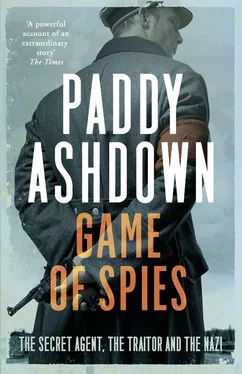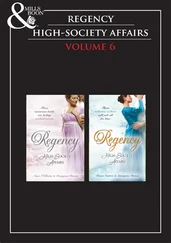At 11 a.m. on 28 June, less than a fortnight after de Gaulle left the city, the newly appointed German commandant of Bordeaux and its region, General von Faber du Faur, entered his new residence in the city, an imposing townhouse on the Rue Vital Carles. Here the préfet of the Gironde presented him with a magnificent welcoming bouquet of flowers in a fine cut crystal vase.
The city which formed the heart of the general’s new command was – and still is – one of the most beautiful and venerable in all France. Lying along a crescent-moon-shaped curve of the Garonne river (from which the city gets its nickname, the ‘ Port de la Lune ’), Bordeaux had been a port since Roman times, shipping iron and tin from its quays; in later centuries, slaves, coffee, cotton, indigo and agricultural products were added to the trade. But the most valuable of all Bordeaux’s commodities – and central to the region’s wealth and dignity – was wine. From the great clarets of the Médoc, to the Graves and Sauternes of the Garonne valley, to the cognac grapes of Charentes – Bordeaux’s rich hinterlands of vineyards made the city affluent, proud, and uncompromisingly mercantile in its outlook.
In the pre-war years the entire port area had been rebuilt and renovated, from the working district of Bacalan at the northern end, south along the sweep of the Quai des Chartrons, to the elegant parks and apartments near the city centre. The most modern cranes were installed, a small-gauge railway was constructed, new warehouses were established, tarmac was laid in place of cobbles and a brand-new tram system was inaugurated to link the port to the rest of the city. Bordeaux was, at the fall of France, not only one of the most beautiful, but also one of the most modern ports in the whole of Europe. On still days a thin diaphanous haze, caused by the incessant bustle of the great port, hung over the city. In stormy weather, the wind funnelled down narrow streets, whipping the harbour into white-topped rufflets and sweeping fallen leaves from the city’s plane trees into drifts along the gutters and neat piles in the sheltered corners of alleyways and squares.
Back from the waterfront, the city of 1940 was little changed from the previous two centuries. Its imposing centre, dominated by the town hall, the eighteenth-century Hôtel de Ville, boasted impeccably manicured tree-lined squares, fine restaurants and elegant frontages. These led to broad boulevards radiating out towards the port’s trading and residential quarters. Beyond the main roads, this was a city of little restaurants, cafés, scurrying markets and narrow cobbled streets, lined with shops and first-floor apartments. Here a cacophony of humanity jostled with a jumble of cars, vélo-taxis, bicycles, lorries, barrows and horse-drawn carts.
The city’s political landscape was also one of contrast. During the 1930s, communism found a strong foothold amongst France’s intellectuals and working classes. Most of the dockworkers, who lived in the city’s crowded Bacalan quarter – where the restaurants were as rough as the wine they served – were, if not communist, then communist sympathisers; as were the cheminots (the railway workers) and the post office workers. In the countryside, too, especially in the Landes region lying between Bordeaux and the Pyrenees, communism and socialism had strong roots. Many of the Bordelais, however, regarded communism with a fear amounting almost to paranoia – seeing it as some kind of modern reincarnation of the sans-culottes of the French Revolution. A secret British wartime report observed that ‘[amongst] the upper bourgeoisie [there is] an apprehension of Russia and a real fear of the former French Communists and of the mob … [they believe that] only evil can come to France from the disorder which would follow the coming to power of the extreme left’.
Those in charge of mercantilist Bordeaux were above all pragmatists. What was good for trade was good for the city. Foreigners came and foreigners went. But if trade (and especially the wine trade) went on, the city prospered, whoever was in charge. The city’s bourgeoisie and petit-bourgeoisie embraced the politics of conservatism and of ‘order’. Among these classes, right or centre-right views were dominant, extreme right nationalism not unusual, and anti-Semitism commonplace.
‘England’, regarded by some in France as the centre of modern Jewry, was often thrown into this mix of political foes. ‘The English, the yids, the capitalists, these are the true enemies of France which is threatened, like every other country, by the Bolshevik sword of Damocles,’ declared one local right-wing activist of the time. When it came to anti-Semitism, Bordeaux was by no means unusual in the France of the 1930s and ’40s. ‘The Jewish question was a subject of lively discussion in France at the time,’ one respected French commentator wrote. ‘There was a strong resurgence of anti-Jewish sentiment in the period before the war and during the years of the Vichy government.’
Von Faber du Faur did not waste time imposing his rule on the city. He laid on a grand military parade through the streets of Bordeaux, designed not just as a spectacle, but also as a show of force. The salute was taken by, amongst others, Erwin Rommel (who requisitioned a nearby château for holiday use). On 1 July 1940 a curfew, enforced by armed soldiers with dogs, was imposed between 2300 and 0500 hours, with curfew-breakers risking long terms of imprisonment or forced labour. All clocks were advanced one hour to match German time. All firearms, including hunting weapons, had to be handed in to the local mairies ; all official notices (including street signs and administrative requests) had to be in German as well as French, and the swastika emblazoned on a red banner was hung outside all principal official buildings. Controls were introduced on traffic in the Gironde estuary and on all major road intersections and railway stations. In time, German oversight would be extended to cover the postal service, telecommunications, newspapers, cinemas, cultural events, agriculture (including, inevitably, wine), commercial transactions, the refining and distribution of petroleum products and the passage of goods and people over the demarcation line into Vichy France. Laws were passed to require farmers to give up a percentage of their produce to the German occupiers – though in most cases, thanks to peasant cunning, these were honoured more in the breach than the observance. German soldiers were under strict instructions to behave politely towards the French, and mostly did. But the terms of occupation were clear. On 10 October 1940 the city’s military administration published a decree stating: ‘Anyone who gives shelter to a member of the British Forces will be condemned to death.’
Almost overnight, it seemed, the German authorities also established an iron grip on the region, turning the whole of the Gironde estuary and the Médoc peninsula into one gigantic military base. Concrete pens were constructed in Bordeaux harbour to house the German submarines engaged in the deadly business of cutting the Atlantic lifeline on which Britain depended to save it from starvation. Italian submarines also had a base in the city. The Bordeaux quays were fortified with concrete pillboxes, a system of interlocking trenches and underground bunkers. This would soon also become the base for a small fleet of converted merchantmen which – fast, lightly armed and German-crewed – acted as blockade-runners, bringing in vital raw materials from Japanese-occupied territories in the Far East.
The Atlantic beaches running south from the mouth of the Gironde, considered a likely place for an Allied invasion, were fortified with a network of defences, including heavy coastal guns in thick concrete casemates; searchlights; numerous machine-gun nests, and a small fleet of riverine patrol vessels. Some 60,000 German troops were stationed in and around Bordeaux. By the end of the war, this would include two infantry divisions, a Panzer division and an army headquarters. A Luftwaffe force of 150 aircraft was assembled at Mérignac airport and on small local airfields. Kriegsmarine units were brought in to protect the Gironde and the coastal waters of the Gulf of Aquitaine.
Читать дальше












